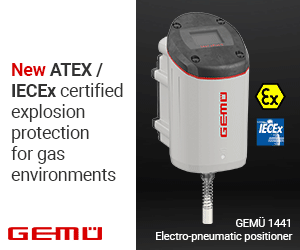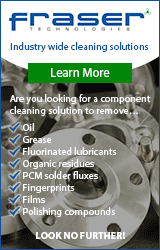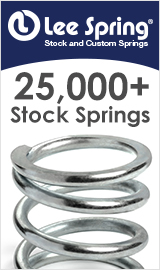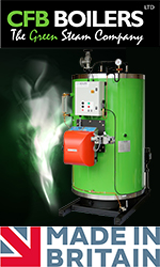How a £10 Wager Started a Business Relationship that Spans the Globe
Before A-SAFE, barriers came almost entirely from the ‘rigid lump’ school of engineering. Facility procurement managers with a pressing need to guide traffic, or protect equipment, or segregate pedestrians from workplace vehicles would more than likely take a trip to their local metal fabricators and ask them to ‘come up with something’ to address their problem.
In return they’d be presented with a lump of metal and bolts that somehow had to be attached to the floor and then hope that it would be fit for purpose. The problem, of course, was that usually it was not
Health care giant Kimberly-Clark have always had a proactive attitude to Health & Safety and protecting their massive workforce across the globe is a priority. One site, in Flint, north Wales, was experiencing persistent problems with their heavy duty forklift trucks impacting a particular section of steel barrier. Time and again – almost on a weekly basis – the company were forced to replace this same barrier, incurring large costs over a sustained period
The problem was more complicated than the barrier not being fit for purpose, however. First, consider basic physics. When a heavy moving object (in this case, a forklift truck) comes into contact with a heavy rigid lump (in this case, a steel barrier) those collision forces need to travel somewhere (in this case, straight down into the steel barrier’s fixtures and fittings, ripping up the concrete floor and uprooting the barrier). Worse, the barrier itself would collapse and need replacing and damage to the forklift itself would be inevitable.
What was needed in order to deal with these problems was a material that was able to absorb, control and dissipate the impacts. As well as this, serious consideration had to be given to the potential energy carried by the forklift, the angle of impacts the vehicle was making on the barrier and the actual height of impact. Only after these factors were properly understood could a barrier be implemented that was fit for purpose.
Enter A-SAFE and their innovative, scientifically-developed collection of plastic (actually, a patented blend of polyolefins and rubbers) barriers. Of course, some people aren’t immediately convinced of the suitability and resilience of plastic barriers over steel, as Kimberly Clark’s Safety Technician at their Flint site, Stewart Leary explained: “We were approached by A-SAFE and I have to admit we were extremely sceptical, but we were willing to offer them a trial.”
Indeed, so sceptical was Stewart that he made a small £10 wager with an
A-SAFE director that, following the new barrier’s installation, it would be ‘ripped up by the forklift in a week’.
Stewart continued: “We didn’t make A-SAFE’s life easy, providing a trial section in a high traffic area. The gantry that we wanted protecting was a problem area and constantly being damaged by forklift trucks. This was a very vulnerable area and I don’t think anyone believed that A-SAFE would stand up to the test or fare any better than the system we had in place previously.”
Nevertheless, when A-SAFE revisited the Flint site some five months later, they were delighted to find the barrier still intact. Battered and bruised, maybe – but still functioning. The cost savings for Kimberly-Clark were immediately obvious.
“It more than did the job,” admitted Stewart, “and was the catalyst to review the site and start replacing all steel barriers with A-SAFE ones.”
Word spread. Health & Safety chiefs from Kimberly-Clark Head Office in America saw the A-SAFE barriers in-situ and the success they were achieving and set about recommending A-SAFE as the approved barrier supplier across its sites going forward, with similar results being achieved in all areas.
Miguel Perez, Safety Environmental Manager at Kimberly-Clark’s modern plant in Spain, explained how the company-wide recommendation lead to enhancing safety systems across their 5,000 sq metre diaper production hall. Pedestrian segregation barriers were installed to help coordinate the busy factory. Better segregation was required to improve pedestrian flow around the plant and also to separate forklift truck aisles from pedestrian corridors. Plus, A-SAFE protected hi-tech electrical units, which were vulnerable to vehicle impacts.
Miguel said: “A-SAFE has proved the most cost-efficient solution for our safety barriers – however, this is just a bonus, as the most essential point is that they provide the highest standard of safety so that our team feel much safer in their working environment. The highly visible yellow barriers have a smart, attractive appearance and have proved to have excellent durability.”
A-SAFE has also reached across the Atlantic and has particularly impressed Kimberly-Clark Health & Safety advisors in its parent-company’s own country, the USA. Kimberly-Clark sites across America now have A-SAFE barriers installed, including Everett Mill in Washington. Scott Basom, Facilities Engineer at the Mill had seen A-SAFE traffic barriers used efficiently and effectively at other parts of Everett Mill and decided to introduce A-SAFE to the areas he had responsibility for.
He explained: “I wasn’t actively looking for a new barrier system, but had come across A-SAFE at other parts of the site, and engineer colleagues had shown me how they were benefiting from using A-SAFE across some of their applications. I was aware that it was used across the corporation and was a recommended supplier to us. Using a few smaller projects I was able to test the benefits myself, which lead to us incorporating A-SAFE wherever possible.
“It’s easy to see why A-SAFE is so popular. It’s so easy to use and install and it looks pretty nice in the warehouse too. Safety is obviously a top priority and with over 1,000 employees on-site we need to eliminate risk at all levels. Metal bollards have to be welded to be repaired and this in turn poses a fire danger, so A-SAFE automatically negates this. Due to the resilience of the material and its ability to deflect and bend under loads, damage to the driver or pedestrian is reduced as is the need for constant repair.”
So, would Scott recommend A-SAFE to other facility managers? The answer is a resounding ‘yes’.
“I would definitely advise anyone looking for safety solutions to give A-SAFE a try. If safety is your job, like mine, then you are always looking for a system like A-SAFE that does what it says and can make your role simpler.”
Today, A-SAFE and Kimberly-Clark enjoy an ongoing business relationship, which spans continents. As wagers go, this was one bet where nobody lost out.
A-SAFE are the inventors and manufacturers of fixed polymer safety barriers; used around the world to offer unbeatable, money-saving protection for buildings, personnel and equipment – for more information call 01422 331133, email sales@asafe.com or visit asafe.com




























































































































